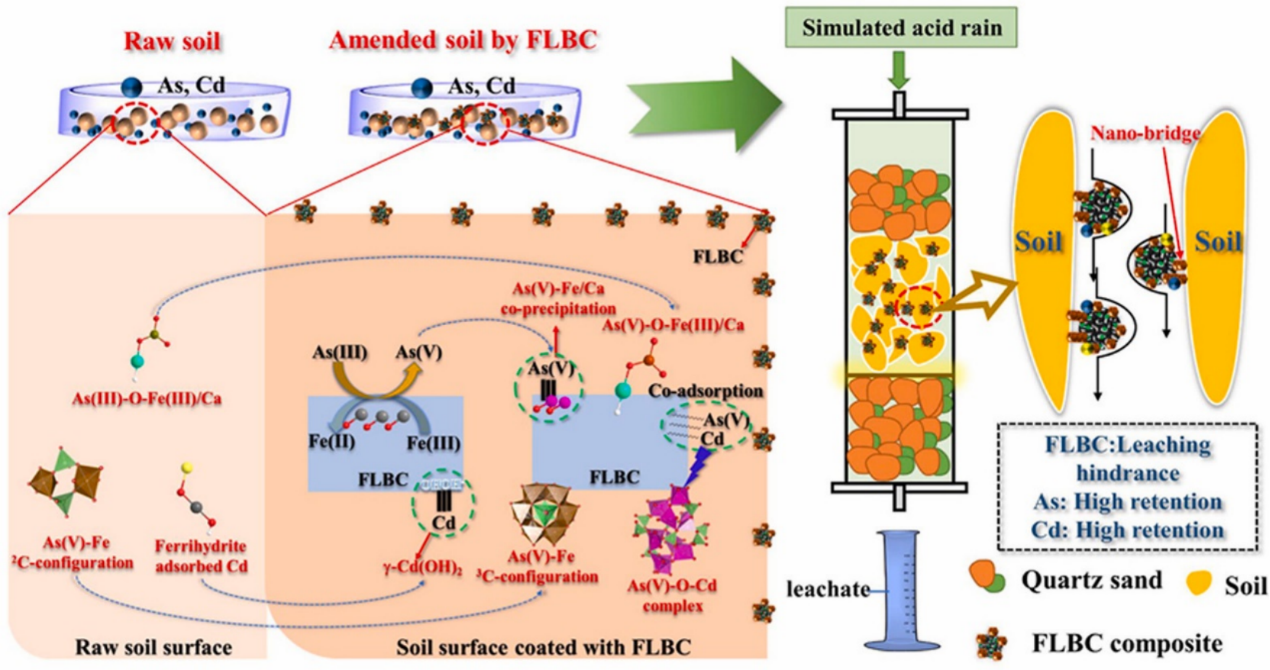Recently, the Agricultural Clean Watershed Innovation Team of the Institute of Environment and Sustainable Development in Agriculture, CAAS has tackled the scientific challenge of remediating As and Cd-contaminated soil. They have revealed the key mechanism of simultaneous and efficient immobilization of As and Cd in soil by a novel passivating material based on magnetic biochar-supported layered double hydroxide. This research provides a new approach for the remediation of As, Cd, and their co-contaminated soil in China. The related research findings have been published in the Journal of Cleaner Production.

In China, soil contamination with As, Cd and both is common, and the remediation of soil contaminated with As, Cd and both is of great significance. Due to the opposite pH-Eh dependencies of As and Cd, this poses a challenge to the immobilization and remediation of As and Cd-contaminated soil. It is an urgent need to overcome these challenges and carry out the research and development of technologies for the synergistic immobilization and remediation of As and Cd.
Using typical agricultural waste as raw materials, this research has independently developed a novel passivating material, FLBC namely magnetic biochar-supported layered double hydroxide (LDH), for the simultaneous and efficient immobilization of As and Cd. The research explored the passivation effect and mechanism for remediating two typical types of soils contaminated with As and Cd. Advanced techniques such as X-ray photoelectron spectroscopy (XPS) and synchrotron radiation X-ray absorption fine structure (XAFS) were employed to investigate the microscopic immobilization mechanism of As and Cd. The research revealed that FLBC immobilized >85% of As and Cd in the two types of contaminated soils. Simultaneously, LDH acted as a nano-bridge between soil colloids and FLBC. In the meanwhile, FLBC released nano-layered metal oxides, enveloping soil particles and facilitating the migration and conversion of arsenic and cadmium species. Multiple stable species were formed on the soil surface, including Ca/Fe/Cd-As(V) and γ-Cd(OH)2 co-precipitation, as well as As(V)-O-Fe(III)/Ca and As-Fe tridentate-hexanuclear corner-sharing complexes. This demonstrated the synergistic immobilization of As and Cd in the soil by FLBC. The use of the Magnetic biochar-supported layered double hydroxide (LDH)-based novel passivating materials for the remediation of As and Cd-contaminated soil presents significant comparative advantages and broad prospects for application.
This research was supported by the National Natural Science Foundation of China and the National Key Research and Development Program.
linkage:https://www.sciencedirect.com/science/article/abs/pii/S0959652623042944?CMX_ID="&SIS_ID=&dgcid=STMJ_219742_AUTH_SERV_PA&utm_acid=81525933&utm_campaign=STMJ_219742_AUTH_SERV_PA&utm_in=DM438010&utm_medium=email&utm_source=AC_

